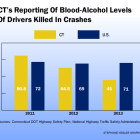Essure
FDA Orders Study Of Essure Contraceptive
|
The U.S. Food and Drug Administration on Monday instructed the maker of Essure to conduct further studies on the controversial birth control device, and recommended that a warning be added to the product label. “While the FDA believes Essure remains an appropriate option for the majority of women seeking a permanent form of birth control, some women may be at risk for serious complications,” the agency said in a statement. “These may include persistent pain, perforation of the uterus or fallopian tubes from device migration, abnormal bleeding and allergy or hypersensitivity reactions.”
Essure, approved by the FDA in 2002 for women ages 21 to 45, is a flexible coil that is inserted by doctors into the fallopian tubes. An estimated 750,000 women have received the product, manufactured by Bayer. Essure has been the target of thousands of complaints from women across the country, including in Connecticut.



